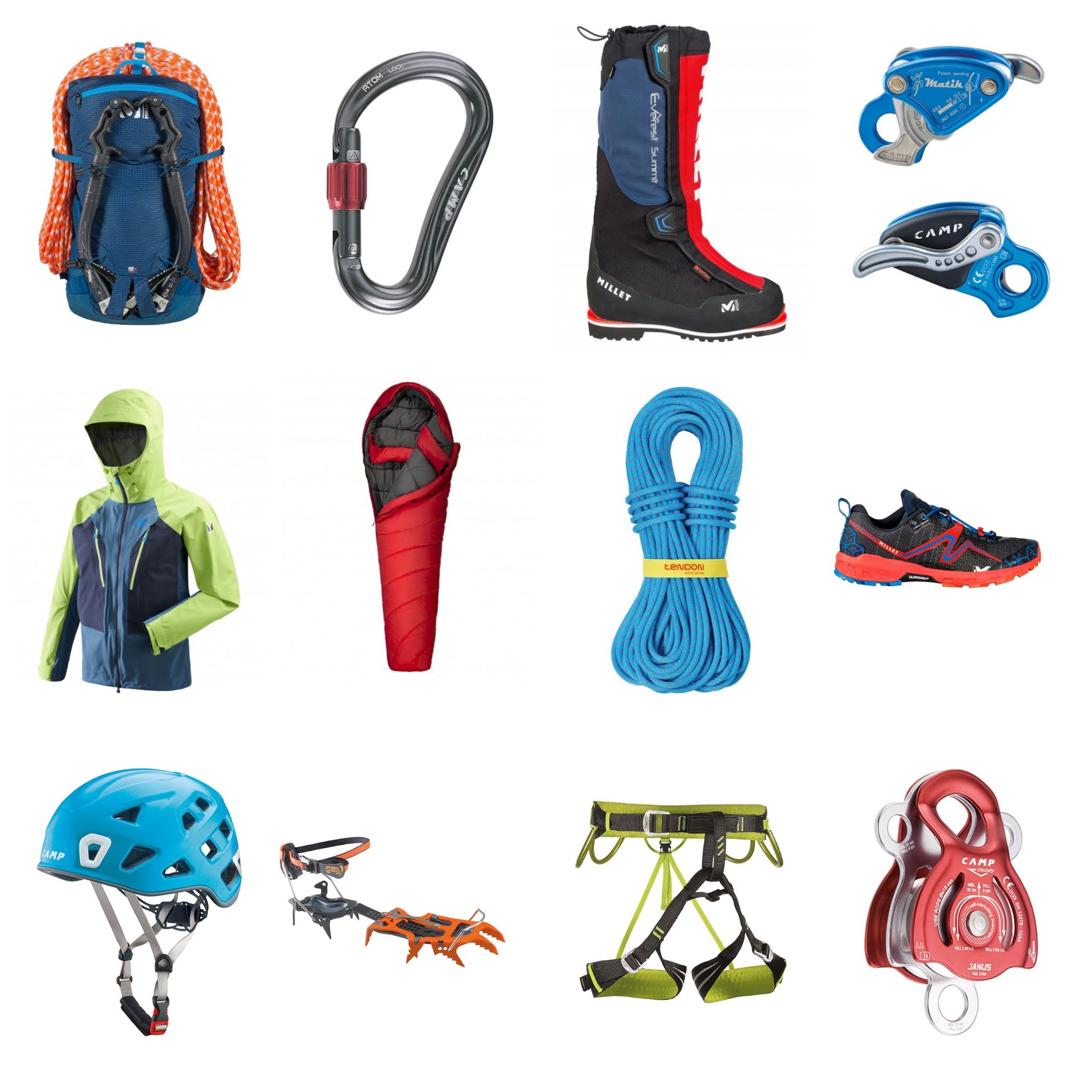Embarking on a journey into the realm of project adventure equipment, we delve into a world where physical challenges intertwine with cognitive and social growth. From the towering heights of climbing walls to the exhilarating rush of zip lines, this equipment serves as a catalyst for transformative experiences.
Project adventure equipment not only provides a thrilling adventure but also fosters essential life skills, promoting teamwork, problem-solving, and the courage to embrace risk. As we explore its multifaceted benefits, safety remains paramount, guiding every aspect of equipment design, maintenance, and usage.
Types of Project Adventure Equipment
Project adventure equipment encompasses a wide range of specialized gear designed to facilitate safe and engaging experiences in outdoor and indoor settings. These tools enhance physical challenges, promote teamwork, and foster personal growth through various activities.
Ropes and Cords
Ropes and cords serve as the foundation for many project adventure activities. They provide support, safety, and challenge in activities such as:
- Belaying and rappelling systems
- Rope bridges and crossings
- Zip lines
Different types of ropes and cords are used based on their strength, elasticity, and intended use. Safety features include tensile strength ratings, abrasion resistance, and the use of kernmantle construction for added durability.
Climbing Equipment
Climbing equipment enables participants to ascend and descend vertical structures. This gear includes:
- Harnesses
- Helmets
- Belay devices
- Climbing ropes
Climbing equipment is designed to meet rigorous safety standards, ensuring proper support, protection from falls, and efficient operation. It allows participants to engage in activities such as rock climbing, rappelling, and high ropes courses.
Navigation Equipment
Navigation equipment helps participants orient themselves in outdoor environments. This gear includes:
- Maps
- Compasses
- GPS devices
Navigation equipment enables participants to plan routes, track their progress, and avoid getting lost. It enhances the safety and enjoyment of activities such as orienteering, hiking, and wilderness exploration.
Benefits of Using Project Adventure Equipment
Project adventure equipment offers a unique blend of physical, cognitive, and social benefits that can enhance personal growth and development. These benefits are realized through various activities that challenge participants to overcome obstacles, solve problems, and work together.
Physical Benefits
Project adventure equipment provides opportunities for physical exertion and the development of motor skills. Activities like climbing, rappelling, and zip-lining require participants to use their entire bodies, improving coordination, balance, and strength. The physical challenges also promote cardiovascular health and endurance.
Cognitive Benefits
Project adventure equipment fosters cognitive development by requiring participants to solve problems, make decisions, and think critically. Activities like ropes courses and mazes challenge participants to plan their movements, overcome obstacles, and adapt to changing conditions. These experiences enhance problem-solving skills, spatial reasoning, and decision-making abilities.
Social Benefits
Project adventure equipment promotes social development by encouraging teamwork, communication, and trust. Activities like trust falls and group problem-solving tasks require participants to rely on each other, share responsibilities, and work together towards a common goal. These experiences strengthen interpersonal relationships, build trust, and enhance communication skills.Project
adventure equipment plays a vital role in promoting teamwork, problem-solving, and risk-taking. By providing a safe and controlled environment for participants to challenge themselves, these activities foster personal growth, resilience, and self-confidence.
Design Considerations for Project Adventure Equipment

The design of project adventure equipment is influenced by several factors, including safety, durability, and functionality. These factors must be carefully considered to ensure that the equipment is safe, reliable, and effective for its intended use.
Safety is paramount in the design of project adventure equipment. The equipment must be designed to minimize the risk of injury to participants. This includes using materials that are strong and durable, as well as designing the equipment to be stable and easy to use.
In addition, the equipment must be regularly inspected and maintained to ensure that it is in good working order.
Durability is another important factor to consider in the design of project adventure equipment. The equipment must be able to withstand the rigors of repeated use in a variety of environments. This includes being able to withstand exposure to the elements, as well as being able to withstand the weight and force of participants.
Functionality is also an important consideration in the design of project adventure equipment. The equipment must be designed to be easy to use and to provide a positive experience for participants. This includes designing the equipment to be comfortable to use, as well as providing features that make it easy to adjust and customize to the needs of individual participants.
In addition to these factors, the design of project adventure equipment can also be influenced by innovative design features that enhance the user experience. These features can include things like built-in safety features, adjustable components, and ergonomic designs.
Safety Protocols for Using Project Adventure Equipment
Ensuring safety is paramount when utilizing project adventure equipment. To mitigate risks, specific protocols must be strictly adhered to.
The safety of participants relies on the collective responsibility of instructors, participants, and spotters. Instructors are tasked with providing thorough training, establishing clear rules, and supervising activities. Participants are expected to follow instructions diligently, wear appropriate safety gear, and report any concerns promptly.
Spotters play a crucial role in providing physical and verbal support during activities.
Proper Training and Supervision
- All participants must undergo comprehensive training conducted by qualified instructors.
- Instructors must possess relevant certifications and experience.
- Training should cover equipment usage, safety protocols, and emergency procedures.
- Supervision must be constant throughout activities.
Risk Management
- Conduct thorough risk assessments before using equipment.
- Identify potential hazards and implement measures to mitigate them.
- Establish clear guidelines for participants and instructors.
- Regularly inspect and maintain equipment to ensure safety.
Emergency Procedures
- Develop and communicate clear emergency procedures.
- Train participants on emergency protocols.
- Establish a designated evacuation route.
- Provide first-aid kits and other necessary medical supplies.
Personal Responsibility
- Participants must follow all safety protocols and instructions.
- Report any concerns or unsafe conditions to instructors immediately.
- Use equipment only as intended and within specified limits.
- Wear appropriate safety gear, including helmets, harnesses, and gloves.
By adhering to these safety protocols, project adventure equipment can be utilized safely and effectively, fostering personal growth and transformative experiences.
Maintenance and Inspection of Project Adventure Equipment
Regular maintenance and inspection of project adventure equipment are crucial to ensure its safety and longevity. Proper maintenance practices help identify potential hazards early on, allowing for timely repairs or replacements to prevent accidents.
Frequency and Types of Inspections
The frequency and type of inspections required for project adventure equipment vary depending on the type of equipment, its usage, and the environment in which it is used. High-use equipment or equipment exposed to harsh weather conditions may require more frequent inspections than those used less frequently or in more protected environments.
- Daily Inspections:Visual inspections should be conducted daily before each use to check for any obvious damage or wear.
- Weekly Inspections:More thorough inspections should be performed weekly to identify any loose connections, frayed ropes, or other potential hazards.
- Monthly Inspections:Monthly inspections should include a comprehensive examination of all components, including load-bearing structures, anchors, and safety mechanisms.
- Annual Inspections:Annual inspections should be conducted by a qualified professional to assess the overall condition of the equipment and identify any major repairs or replacements that may be necessary.
Importance of Regular Maintenance, Project adventure equipment
Regular maintenance is essential for ensuring the safety and longevity of project adventure equipment. By addressing minor issues promptly, more significant problems can be prevented, reducing the risk of accidents and costly repairs. Regular maintenance also helps extend the equipment’s lifespan, maximizing its value and reducing the need for frequent replacements.
Trends in Project Adventure Equipment

The field of project adventure is constantly evolving, and so is the equipment used in these activities. In recent years, there have been several key trends in the design and use of project adventure equipment, including the increasing use of technology, a focus on sustainability, and a drive towards greater inclusivity.
Technology is playing an increasingly important role in project adventure equipment. For example, many new pieces of equipment now incorporate sensors that can track data on participants’ performance and progress. This data can be used to provide feedback to participants and instructors, and to help design more effective and challenging activities.
Sustainability is another important trend in the design of project adventure equipment. Manufacturers are increasingly using recycled materials and sustainable production practices to create equipment that is more environmentally friendly. For example, some companies now offer ropes and harnesses made from recycled plastic bottles.
Finally, there is a growing trend towards greater inclusivity in project adventure equipment. Manufacturers are developing equipment that is accessible to people of all ages, abilities, and backgrounds. For example, some companies now offer adaptive climbing walls and harnesses that can be used by people with disabilities.
Innovative Equipment Shaping the Future of Project Adventure Activities
There are a number of innovative pieces of project adventure equipment that are shaping the future of these activities. Some of these include:
- Virtual reality (VR) climbing walls: VR climbing walls allow participants to experience the thrill of climbing without the risk of falling. These walls are becoming increasingly popular for use in schools and other indoor settings.
- Adaptive climbing walls: Adaptive climbing walls are designed to be accessible to people with disabilities. These walls feature a variety of adaptive features, such as ramps, adjustable holds, and sensory panels.
- Slacklines: Slacklines are a type of tightrope that is suspended between two trees or other supports. Slacklines are becoming increasingly popular for use in project adventure activities, as they provide a fun and challenging way to improve balance and coordination.
- Zip lines: Zip lines are a type of aerial runway that allows participants to glide through the air. Zip lines are becoming increasingly popular for use in project adventure activities, as they provide a thrilling and unforgettable experience.
Summary

In conclusion, project adventure equipment empowers individuals to push their boundaries, discover their strengths, and forge lasting connections. By embracing innovation, safety, and inclusivity, we continue to shape the future of project adventure, ensuring that its transformative benefits reach far and wide.
Expert Answers
What are the different types of project adventure equipment?
Project adventure equipment encompasses a wide range of tools and structures, including climbing walls, ropes courses, zip lines, and team-building obstacles.
How does project adventure equipment promote teamwork?
Project adventure activities require participants to work together, fostering communication, trust, and problem-solving skills.
What are the safety protocols for using project adventure equipment?
Safety is paramount in project adventure activities. Proper training, supervision, and risk management are essential, along with the use of certified equipment and adherence to established protocols.